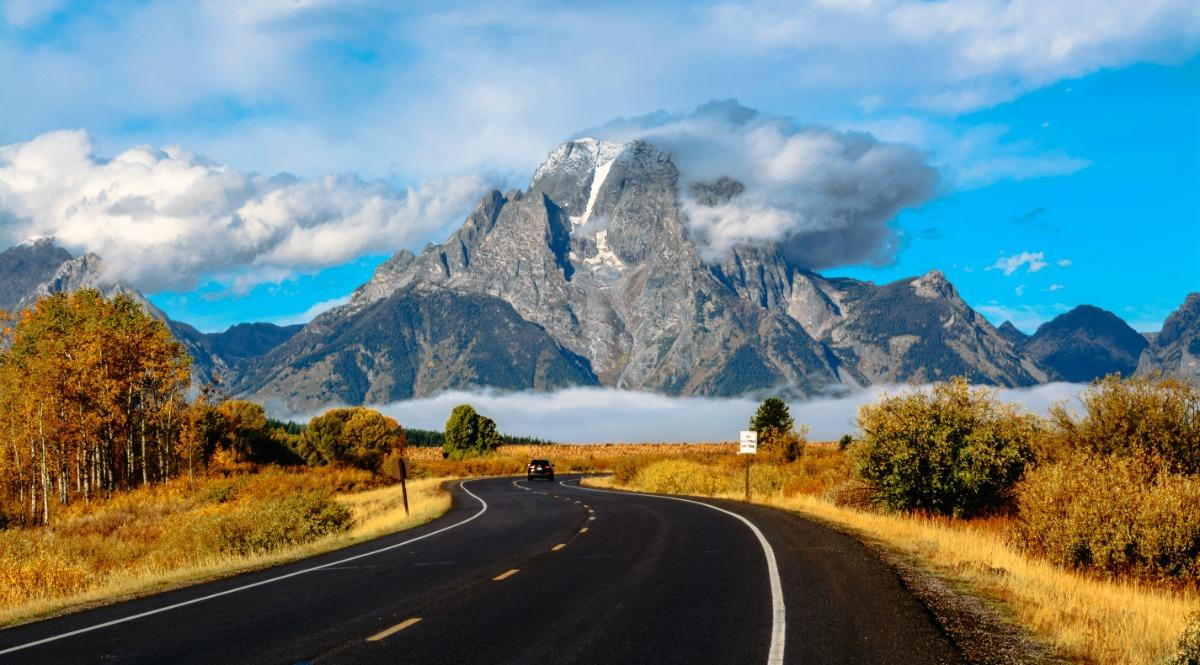The History Of Grand Teton National Park

- posted: May 25, 2023
The history of Grand Teton National Park is deeply rooted in the natural and cultural heritage of the Teton Range region in northwestern Wyoming, United States. Here is a brief overview of its history:
1. Native American Presence:
The area around the Teton Range has been inhabited by Native American tribes for thousands of years. The Shoshone, Bannock, and Blackfoot tribes were among those who utilized the land for hunting, gathering, and spiritual activities.
2. Exploration and Fur Trade Era:
In the early 19th century, fur trappers and explorers began venturing into the area. In 1807, John Colter, a member of the Lewis and Clark expedition, explored the Jackson Hole valley, which encompasses the present-day park. The fur trade, with beaver pelts being the primary commodity, attracted more trappers and traders to the region.
3. Homesteading and Ranching:
By the late 19th century, settlers began establishing homesteads and cattle ranches in Jackson Hole. The area's fertile soil and plentiful water made it suitable for agriculture and ranching, despite the harsh winters and isolation.
4. Preservation Efforts:
Concerns over the potential destruction of the scenic beauty of the Teton Range led to early preservation efforts. In 1897, the U.S. Forest Reserve (now known as the Bridger-Teton National Forest) was established to protect the forested slopes of the Tetons. However, it wasn't until the early 20th century that serious discussions about preserving the area as a national park began
5. Creation of Grand Teton National Park:
In 1929, John D. Rockefeller, Jr. and his family began purchasing land in Jackson Hole with the intention of donating it to the government for conservation purposes. The Rockefeller family's efforts, along with the support of others, led to the establishment of Grand Teton National Park on February 26, 1929.
6. Expansion and Addition of Surrounding Areas:
Over the following decades, the park underwent several expansions and additions to protect its ecological and scenic values. In 1943, President Franklin D. Roosevelt signed a bill that added Jackson Hole National Monument to the park, increasing its size significantly. Additionally, the Rockefeller family continued to donate land to the park, including the beautiful Laurance S. Rockefeller Preserve.
7. Modern Developments:
Today, Grand Teton National Park encompasses approximately 310,000 acres of diverse ecosystems, including the Teton Range, glacial lakes, alpine meadows, and the Snake River. The park offers numerous recreational opportunities such as hiking, camping, wildlife viewing, mountaineering, and boating, attracting millions of visitors each year.
Grand Teton National Park is not only a testament to the remarkable natural landscapes of the American West but also a result of the dedication and conservation efforts of individuals and organizations who recognized its unique value and sought to preserve it for future generations.

- posted: May 25, 2023
The history of Grand Teton National Park is deeply rooted in the natural and cultural heritage of the Teton Range region in northwestern Wyoming, United States. Here is a brief overview of its history:
1. Native American Presence:
The area around the Teton Range has been inhabited by Native American tribes for thousands of years. The Shoshone, Bannock, and Blackfoot tribes were among those who utilized the land for hunting, gathering, and spiritual activities.
2. Exploration and Fur Trade Era:
In the early 19th century, fur trappers and explorers began venturing into the area. In 1807, John Colter, a member of the Lewis and Clark expedition, explored the Jackson Hole valley, which encompasses the present-day park. The fur trade, with beaver pelts being the primary commodity, attracted more trappers and traders to the region.
3. Homesteading and Ranching:
By the late 19th century, settlers began establishing homesteads and cattle ranches in Jackson Hole. The area's fertile soil and plentiful water made it suitable for agriculture and ranching, despite the harsh winters and isolation.
4. Preservation Efforts:
Concerns over the potential destruction of the scenic beauty of the Teton Range led to early preservation efforts. In 1897, the U.S. Forest Reserve (now known as the Bridger-Teton National Forest) was established to protect the forested slopes of the Tetons. However, it wasn't until the early 20th century that serious discussions about preserving the area as a national park began
5. Creation of Grand Teton National Park:
In 1929, John D. Rockefeller, Jr. and his family began purchasing land in Jackson Hole with the intention of donating it to the government for conservation purposes. The Rockefeller family's efforts, along with the support of others, led to the establishment of Grand Teton National Park on February 26, 1929.
6. Expansion and Addition of Surrounding Areas:
Over the following decades, the park underwent several expansions and additions to protect its ecological and scenic values. In 1943, President Franklin D. Roosevelt signed a bill that added Jackson Hole National Monument to the park, increasing its size significantly. Additionally, the Rockefeller family continued to donate land to the park, including the beautiful Laurance S. Rockefeller Preserve.
7. Modern Developments:
Today, Grand Teton National Park encompasses approximately 310,000 acres of diverse ecosystems, including the Teton Range, glacial lakes, alpine meadows, and the Snake River. The park offers numerous recreational opportunities such as hiking, camping, wildlife viewing, mountaineering, and boating, attracting millions of visitors each year.
Grand Teton National Park is not only a testament to the remarkable natural landscapes of the American West but also a result of the dedication and conservation efforts of individuals and organizations who recognized its unique value and sought to preserve it for future generations.
Visit our Office
1115 Maple Way
Jackson, WY 83001